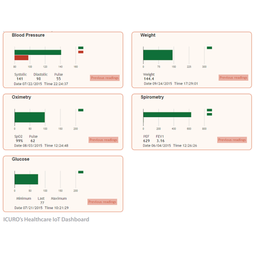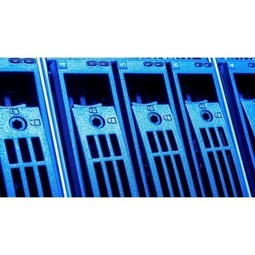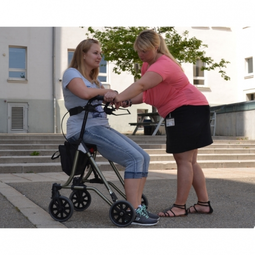Case Studies.
Our Case Study database tracks 18,927 case studies in the global enterprise technology ecosystem.
Filters allow you to explore case studies quickly and efficiently.
-
(6)
- (4)
- (4)
-
(2)
- (2)
-
(1)
- (1)
-
(1)
- (1)
- (1)
-
(1)
- (1)
- View all 7 Technologies
- (1)
- (1)
- (1)
- (2)
- (2)
- (1)
- (1)
- (1)
- (1)
- (6)
Selected Filters
6 case studies
|
Cutting-edge Predictive Analytics for HIROTEC Group
ThingWorx
Hirotec needed to ensure continuous operations and to minimize unplanned downtime in its manufacturing facilities. Unplanned downtime is costly and compromises Hirotec's ability to deliver its goods to customers on time.
|
|
Use IoT to Improve Healthcare Business Outcomes
ThingWorx
Before developing an IoT solution, ICURO hit a major roadblock with its healthcare platform. Limited data sharing between healthcare providers and insurance companies impeded effective communication, resulting in frequent duplication of efforts and making it difficult for each entity to deliver better care while maintaining reasonable costs. ICURO wanted to resolve these data sharing issues, they started developing tools and systems that connect products in meaningful ways, enabling both entities to collaborate more effectively.
|
|
Elisa is Paving the Way with Their IoT Service Solution
ThingWorx
With an overwhelming response to the release of their IoT solution, Elisa needed a way to manage the flood in demand without compromising on their customer satisfaction or quality.
|
|
ThingWorx Delivers Business Transformation to Sysmex
ThingWorx
With a mature business comprising connected field instruments for remote monitoring, Sysmex realized that the next step in order to transform their business would be to unlock more value from their data. The only way they could outpace their competitors would be to deliver higher quality customer service and improve their internal operational efficiency.
|
|
Springpath Gains Real-Time Intelligence and Improves Operational Efficiencies
ThingWorx
As the HCI market has grown increasingly crowded, Springpath sought to differentiate itself by providing enhanced serviceability to its customers. But it was lacking in its ability to provide fast customer issue resolution for both hardware and software components and in its ability to get meaningful, real-time intelligence from data. Springpath needed to create better operational efficiencies for its support organization. To better service its customers, Springpath would need a solution to resolve customer issues faster while collecting real-time customer data from systems to extract better insights for both internal support teams and end customers alike. Building a solution would require quick ingest and parsing of data – which was at the time often sent in the form of complex log files – and the ability to present it as actionable information. Further, a solution would need to enable support engineers to provide quick issue resolution to minimize downtime. Ideally, Springpath wanted customers to get full visibility into their own systems – and thereby be able to perform timely maintenance tasks – with the goal of maximizing uptime and ensuring optimal system performance. In addition, a solution should integrate with their issue management system, Salesforce.com Service Portal, for easy access for both the in-house support team and end-customers. “Offering world-class Customer Service in the IoT era requires a comprehensive and scalable Analytics platform that is well-integrated with an existing Support workflow,” says Brett Flinchum, VP of Global Customer Success at Springpath.
|
|
Furtwangen University develops “IoT Walker” and “IoT Wheelchair” using PTC
ThingWorx
Recent studies have found that patients return to the hospital at an alarmingly high rate among those who are hospitalized for heart failure, almost one in four are re-hospitalized within 30 days. Such a focus has led to novel approaches to improve patient care and reduce the need for re-hospitalization. Many of these strategies depend on technologies that employ remote patient monitoring (RPM), using the Internet of Things (IoT) and cloud computing, so that their health care team can track their progress without needing them to come to the office. At the Hochschule Furtwangen University (HFU) in Germany, students across multiple disciplines are working to develop this RPM technology into mechanical devices to aid in monitoring patients remotely. Their idea is to utilize the Internet of Things to develop “smart” wheelchairs and walkers that will transmit patient information to a dashboard developed in PTC’s ThingWorx to monitor various parameters and develop alarms specific to each patient. Achim Bumüller, Senior Assistant in the Mechanical and Medical Engineering Department, is managing the project along with five other faculty members dedicated to each discipline such as electronics, informatics, and mechanical engineering. “Since our university is located in the Black Forest of Germany in Baden-Württemberg, the project was originally developed due to the need for remote monitoring in the small villages that are 20-30 kilometers from their nearest doctor or hospital; however, the target has grown to include the necessity of monitoring patients inside a hospital, nursing home or other areas,” states Bumüller.
|










